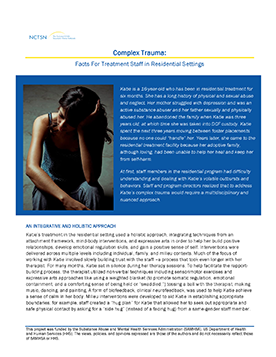
Complex Trauma: Facts for Treatment Staff in Residential Settings
Details the importance of a holistic, multidisciplinary, multi-level approach to addressing the needs of youth with complex trauma in residential treatment settings.
May was first declared as Mental Health Awareness Month in 1949. In 2006, Children’s Mental Health Awareness Day was chosen as a special day during this month to focus on the mental health needs of children. Since 2006, May has been a time to acknowledge the importance of children's mental health, show that positive mental health is essential to a child's healthy development from birth, promote positive youth development, resiliency, and recovery, along with the transformation of mental health service delivery for youth, adolescents, and their families.
The National Child Traumatic Stress Network (NCTSN) has compiled a list of helpful resources for parents and caregivers, children, mental health providers, child welfare and juvenile justice professionals, healthcare providers, educators and school staff, military families, and policy makers.
A list of external resources related to children's mental health awareness is available here.

Details the importance of a holistic, multidisciplinary, multi-level approach to addressing the needs of youth with complex trauma in residential treatment settings.
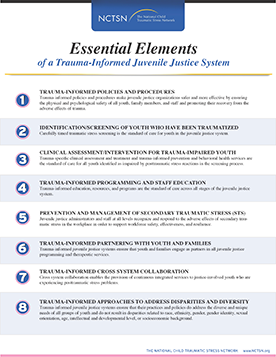
Helps programs who work with justice-involved youth better understand the steps to take to recognize and respond to the trauma-related needs of youth, family members, and staff working in the justice system.
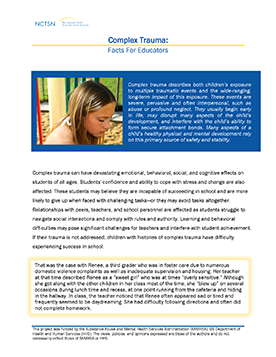
Helps educators and school staff recognize the signs and symptoms of complex trauma and offers recommendations on how to help students heal.
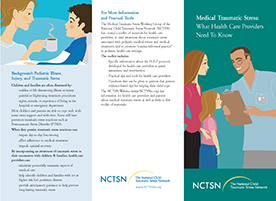
Provides a brief overview of medical traumatic stress, the D-E-F protocol (Reduce Distress, Promote Emotional Support, and Remember the Family) and traumatic stress reactions.
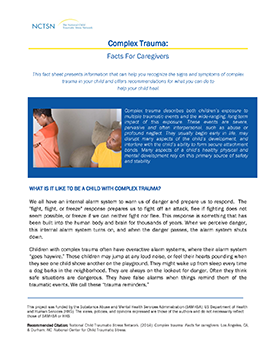
Helps parents and caregivers recognize the signs and symptoms of complex trauma and offers recommendations on how to help children heal.
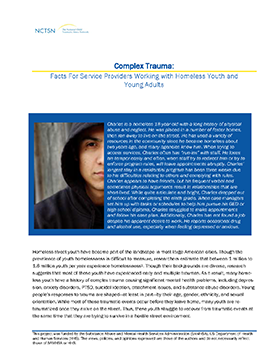
Offers information to service providers on how to support teens and young adults who are experiencing homelessness with a trauma history.
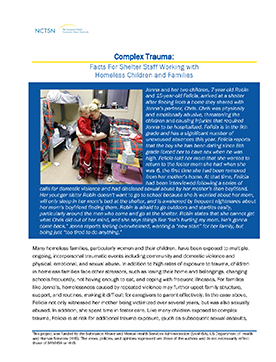
Guides shelter staff in offering support to children and families who are experiencing homelessness and who have experienced trauma.
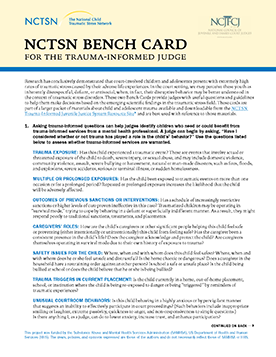
Provides judges with useful questions and guidelines to help make decisions based on the emerging scientific findings in the traumatic stress field. These bench cards assist judges and court-appointed professionals doing mental health assessment of children.
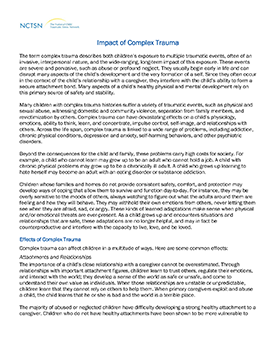
Offers information about complex trauma. This fact sheet details the impact of complex trauma, the effects of complex trauma, the long-term health consequences, and the economic impact of complex trauma.

Details the importance of a trauma assessment when families have experienced a trauma and guides clinicians in the assessment process.
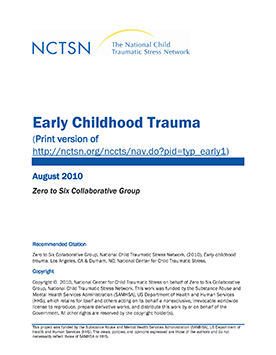
Offers details on how early childhood trauma is unique, the scope of the problem, as well as the symptoms and behaviors associated with exposure to trauma at an early age.
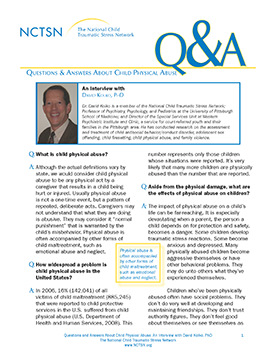
Offers parents, caregivers, and providers answers to commonly asked questions about child physical abuse.